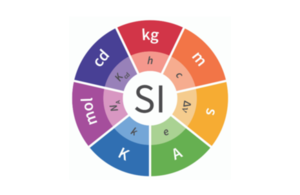Scientists set to overhaul International System of Units
Kilogram set to be redefined

All SI units are now defined in terms of constants that describe the natural world
Paris, France
On 16th November 2018, measurement scientists from more than 60 countries will come together to witness the vote on the redefinition of the International System of Units (SI), changing the world’s definition of the kilogram, the ampere, the kelvin and the mole. If agreed, these changes will come into force on 20th May 2019. The vote will take place at the General Conference on Weights and Measures in Versailles, France, which is organized by the International Bureau of Weights and Measures (BIPM). The decision will mean that all SI units will be defined in terms of constants that describe the natural world. This will assure the future stability of the SI and open the opportunity for the use of new technologies, including quantum technologies, to implement the definitions.
The decision will bring an end to the use of physical objects to define measurement units. The kilogram, for example, is currently defined as being the mass of the International Prototype of the Kilogram, a cylinder of a platinum alloy stored at the BIPM in France. This object has served science and technology well for nearly 130 years, but its stability during this period could only be confirmed by comparisons with identical copies, which is a difficult process and potentially inaccurate. The proposed change will see the kilogram defined by the Planck constant – the fundamental constant of quantum physics.
“The SI redefinition is a landmark moment in scientific progress.” said Martin Milton, Director, International Bureau of Weights and Measures (BIPM), “Using the fundamental constants we observe in nature as a foundation for important concepts such as mass and time means that we have a stable foundation from which to advance our scientific understanding, develop new technologies and address some of society’s greatest challenges.”
Julian Braybrook, Government Chemist, said: “In many of the chemical sciences, the concepts and application of measurement science are a largely accepted practice. The redefinition of some of the SI may therefore seem significant but in common practice, little will change as a result. A system based on the fundamental constants of nature, rather than potentially changing physical artefacts such as the kilogram, will ensure a more stable basis for the accurate and safe measurement of quantities of food ingredients or contaminants, the premise of which underpins discharge of the statutory duties of the Government Chemist.”
The expected new definitions impact four of the seven base units of the SI: the kilogram, ampere, kelvin and mole, and all units derived from them, such as the volt, ohm and joule.
- The kilogram – will be defined by the Planck constant (h)
- The ampere – will be defined by the elementary electrical charge (e)
- The kelvin – will be defined by the Boltzmann constant (k)
- The mole – will be defined by the Avogadro constant (NA)
Although the size of these units will not change (a kilogram will still be a kilogram), the four redefined units will join the second, the metre and the candela to ensure that the revised SI will maintain its relevance by facilitating technical innovations. Just as the redefinition of the second in 1967 provided the basis for technology that has transformed how we communicate across the globe, through GPS and the internet, the new changes will have wide-reaching impact in science, technology, trade, health and the environment, among many other sectors.
For more information about the work the Government Chemist does contact: